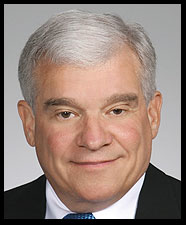There has been a noticeable change in OSHA’s compliance environment with more aggressive enforcement, a focus on the entire company, rather than a single establishment and an emphasis on whistleblower cases. Understanding these trends can help employers avoid costly fines.
OSHA is using repeat violations to drive up penalties
OSHA characterizes citations as Other Than Serious (OTS), Serious, Willful, or Repeat. While the maximum penalty for OTS and Serious citations is modest, $7,000 per violation, for Willful and Repeat violations, OSHA can issue penalties up to $70,000 per violation.
Under the current administration OSHA is increasingly using “repeat” classifications, driving up OSHA penalties.
A 2010 administrative change to the penalty calculation system lengthened the look back period for past violations to five years from three years so now a “Repeat” citation can be issued if the employer received a citation in the previous five years for a “substantially similar” hazard. Coupled with OSHA’s shift from site-specific to enterprise-wide violations and targeted inspections of companies with past violations, this has led to a 215% increase in the number of Willful and Repeat violations issued in the past two years. The focus on Repeat violations also has led to triple the number of significant enforcement actions (cases over $100,000) over the past two years.
OSHA broadens actions from site-specific approach to enterprise-wide
Historically OSHA treated workplaces as individual, independent establishments. However, recent actions have shifted the focus to whole companies. For Repeat violations, OSHA now treats related workplaces within a corporate family as one workplace. In July 2011, OSHA issued citations for Repeat violations, totaling $99,000 to the Walgreens store in Lithonia, GA. They were considered “Repeat” because the same three violations were found at a Chicago Walgreens in May 2008.
In June 2011 OSHA issued a new Compliance Directive expanding the use of Corporate Settlement Agreements (CSAs), from egregious or per-instance citation cases to a broader range of enforcement cases. According to the Directive: “With a CSA, OSHA is able to obtain formal recognition by the employer of the cited hazards and formal acceptance of the obligation to seek out and abate those hazards throughout all the workplaces under its control. CSAs also enable OSHA to leverage resources more widely and thus use them more efficiently by avoiding numerous inspections of like corporate locations. The result is more timely reduction and uniform abatement of serious hazards at multiple worksites.”
Using this expanded power, OSHA reached an enterprise wide settlement with a national roofing company, stemming from violations at a New Hampshire worksite. In addition to paying a $34,750 fine and correcting hazards, Lithia Springs, Ga.-based Nations Roof LLC and its 14 affiliated companies agreed to completely reinvent a uniform safety and health program with extensive requirements including significant improvements to employee training, safety and health planning, work site inspections, and management structure and accountability as well as compliance reporting.
Most recently, The U.S. Department of Labor’s regional solicitor’s office in Boston has filed a complaint against DeMoulas Super Markets Inc., doing business as Market Basket, with the Occupational Safety and Health Review Commission. The complaint asks the commission to order the Tewksbury, Mass.-based chain to comply with the department’s Occupational Safety and Health Administration’s safety standards designed to protect employees from fall and laceration hazards at the employer’s more than 60 stores in Massachusetts and New Hampshire, not just at the stores where the violations were discovered.
OSHA expands power to punish record keeping violations
OSHA recordkeeping can be challenging, fraught with confusion over what is and is not recordable. This became even more relevant in 2011 when an Occupational Safety Health Review Commission decision effectively stretched the statute of limitations for OSHA recordkeeping violations from six months to five years or more. In a 2-1 decision, the Commission affirmed OSHA’s authority to punish employers for recordkeeping violations that occurred up to five years before the expiration of the six-month statute of limitations governing such recordkeeping errors, on the grounds that improper recordkeeping may constitute a continuing violation of OSHA’s mandatory five-year record retention regulation.
Emphasis on hazard alerts
OSHA requirements can be industry specific, workplace specific and/or hazard specific. The length and complexity of OSHA standards make it difficult to determine all relevant sections. According the OSHA Law Blog by Jackson Lewis LLP, over the last several months, OSHA has continued – and expanded – its practice of publicizing “Industry/Hazard Alerts” on its web site. “These Alerts are designed to notify employers in certain industries of hazards that are of particular concern to the Agency. In part, OSHA is using this technique to ensure industry recognition and knowledge of hazards, which OSHA may attempt to utilize in the context of enforcement proceedings.”
Budget increase proposed for Whistleblower Protection programs
While President Obama’s budget proposal for OSHA is essentially level funding, it includes a 23.5% increase, including 37 new employees, for the 21-whistleblower protection programs administered by OSHA. The increase is to reduce the backlog of whistleblower claims and prepare for a high volume of complex cases with recently passed laws involving health care reform, food safety and finance reform. The current administration, compared to the previous one, has also done more to encourage workers to come forward with whistleblower complaints.
Additional information about UNICO Group, Inc. can be found online at www.unicogroup.com.

